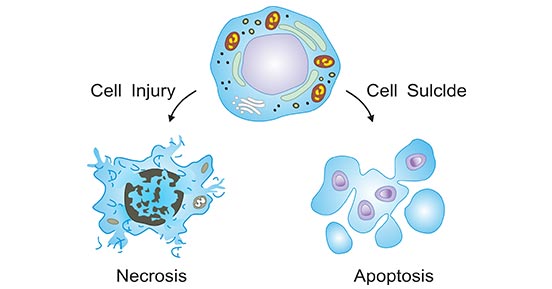A 17-year-old college-bound student receives a vaccine against an organism that causes meningitis. This is an example of:
Tertiary prevention.
Primary prevention.
Disease treatment.
Secondary prevention.
The Correct Answer is B
Choice A Reason:
Tertiary prevention involves measures taken to reduce the impact of an ongoing illness or injury that has lasting effects. This includes rehabilitation and efforts to prevent further complications or deterioration. Vaccination, however, is aimed at preventing the disease before it occurs, which does not align with the concept of tertiary prevention.
Choice B Reason:
Primary prevention refers to actions taken to prevent the onset of disease before it occurs. Vaccination is a classic example of primary prevention because it aims to protect individuals from contracting diseases by stimulating the immune system to recognize and fight specific pathogens. In this case, the meningococcal vaccine helps prevent meningitis, making it a primary preventive measure.
Choice C Reason:
Disease treatment involves managing and caring for a patient to combat a disease or condition. This includes interventions aimed at curing the disease, alleviating symptoms, or preventing complications. Vaccination does not fall under disease treatment because it is a preventive measure rather than a therapeutic one
Choice D Reason:
Secondary prevention focuses on early detection and prompt intervention to prevent the progression of a disease. This includes screening tests and early treatment of conditions to halt or slow their progression. Vaccination, however, is intended to prevent the disease from occurring in the first place, which is not the goal of secondary prevention.
Nursing Test Bank
Naxlex Comprehensive Predictor Exams
Related Questions
Correct Answer is B
Explanation
Choice A Reason:
Bronchoconstriction is the narrowing of the airways in the lungs due to the tightening of surrounding smooth muscle. This response is typically associated with conditions like asthma and is not a common reaction to acute stress. During stress, the sympathetic nervous system actually causes bronchodilation to increase airflow and oxygen delivery to the muscles.
Choice B Reason:
This is the correct answer. Increased glucose production is a typical response to acute stress. The body releases stress hormones like adrenaline and cortisol, which stimulate the liver to produce more glucose. This process, known as glycogenolysis, ensures that the body has enough energy to handle the stressor. This response is part of the “fight-or-flight” mechanism, preparing the body for immediate physical activity.
Choice C Reason:
Decreased cortisol release is not expected during acute stress. In fact, cortisol levels typically increase as part of the body’s stress response. Cortisol helps to mobilize energy stores, suppress inflammation, and support cardiovascular function. Therefore, this choice is incorrect.
Choice D Reason:
Bradycardia, or a slower than normal heart rate, is not a typical response to acute stress. Instead, the sympathetic nervous system increases heart rate (tachycardia) to ensure that more blood is pumped to vital organs and muscles. This helps the body to respond more effectively to the stressor.
Correct Answer is D
Explanation
Choice A: Atrophy
Atrophy refers to the reduction in size or wasting away of an organ or tissue due to a decrease in cell size or number. This can occur due to various reasons such as disuse, lack of nutrition, or loss of nerve supply. While atrophy involves the shrinkage of cells, it does not directly result in cellular death. Instead, it is a form of cellular adaptation to adverse conditions.
Choice B: Proliferation
Proliferation is the process by which cells grow and divide to produce more cells. This process is essential for growth, development, and tissue repair. Proliferation leads to an increase in the number of cells and is the opposite of cellular death. It is a tightly regulated process that ensures the maintenance and regeneration of tissues.
Choice C: Mutation
Mutation refers to changes in the DNA sequence of a cell. These changes can occur due to errors during DNA replication, exposure to radiation, or chemical mutagens. While mutations can lead to various outcomes, including cancer, they do not directly cause cellular death. Instead, mutations can alter the function of genes and proteins, potentially leading to uncontrolled cell growth or other cellular dysfunctions.
Choice D: Death
Apoptosis is a form of programmed cell death that occurs in multicellular organisms. It is a highly regulated process that allows the body to remove damaged or unnecessary cells without causing harm to surrounding tissues. Apoptosis involves a series of biochemical events leading to characteristic cell changes and eventual death. This process is crucial for maintaining cellular homeostasis and preventing the development of diseases such as cancer.

Whether you are a student looking to ace your exams or a practicing nurse seeking to enhance your expertise , our nursing education contents will empower you with the confidence and competence to make a difference in the lives of patients and become a respected leader in the healthcare field.
Visit Naxlex, invest in your future and unlock endless possibilities with our unparalleled nursing education contents today
Report Wrong Answer on the Current Question
Do you disagree with the answer? If yes, what is your expected answer? Explain.
Kindly be descriptive with the issue you are facing.
